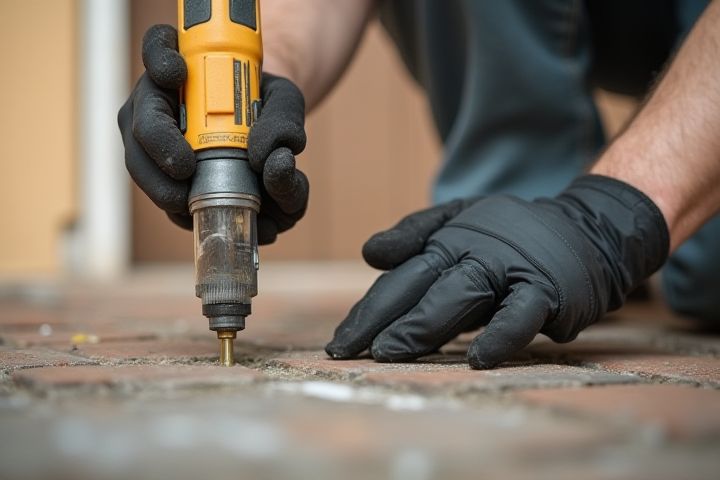
Conduct house maintenance seasonally to ensure every aspect of your home remains in optimal condition. Spring is ideal for inspecting roofs and gutters, as melting snow and rain can reveal potential leaks. Summer offers a great time for exterior painting and power washing to protect against sun damage and mold growth. In the fall, focus on heating systems, checking your furnace or boiler to prepare for winter's cold. Winter is perfect for tackling indoor projects like inspecting insulation and testing smoke detectors, ensuring a safe and comfortable environment throughout the colder months.
When To Conduct House Maintenance
Check roofs for leaks.
Conduct roof inspections at least twice a year, ideally in spring and autumn, to identify potential leaks and damage. After severe weather events, such as heavy rain or strong winds, it's crucial to examine your roof for any visible signs of wear or leaks. Pay special attention to areas around chimneys, vents, and gutters, as these are common points of water intrusion. Regular maintenance can extend the lifespan of your roof by up to 20 years, providing you with added peace of mind.
Inspect gutters for clogs.
Inspect your gutters for clogs at least twice a year, ideally in the spring and fall, to prevent water damage and ensure proper drainage. This maintenance task is essential as clogged gutters can lead to overflow, causing significant issues such as roof leaks or foundation erosion. If you live in an area with heavy foliage, checking monthly during the autumn season may be necessary to clear debris. Failure to maintain your gutters can result in costly repairs, averaging between $1,000 and $4,000 depending on the extent of the damage.
Service HVAC systems.
Conduct HVAC system maintenance at least once a year, ideally in the spring or fall, to ensure optimal performance during peak seasons. Regular tasks include changing air filters, checking refrigerant levels, and inspecting ductwork for leaks, which can enhance energy efficiency and indoor air quality. You should also schedule a professional inspection every few years to identify potential issues early and prolong the life of your system. Neglecting routine maintenance might lead to costly repairs and inefficient heating and cooling throughout your home.
Test smoke alarms.
Testing smoke alarms should occur monthly to ensure safety and reliability in your home. It's crucial to replace the batteries at least once a year and consider changing the entire unit every 10 years for optimal performance. During your testing, make sure to clean the alarm housing to remove any dust or debris that may hinder functionality. Regular checks will significantly reduce the risk of fire-related incidents and provide peace of mind for you and your family.
Clean dryer vents.
House maintenance should prioritize cleaning dryer vents at least once a year to prevent lint buildup, which poses a fire hazard and reduces dryer efficiency. Regular inspections are necessary, especially if you notice longer drying times or a burning smell during operation. This task is essential after heavy laundry seasons, such as during winter months when drying frequency increases. You can enhance indoor air quality and energy savings by scheduling this maintenance regularly.
Seal windows and doors.
Inspect and seal windows and doors during seasonal transitions, particularly in fall and spring, to maximize energy efficiency. Studies show that proper sealing can reduce heating and cooling costs by up to 20%. You should check for gaps or cracks every six months and replace worn weatherstripping to ensure a tight seal. Regular maintenance enhances indoor comfort while protecting your home from moisture intrusion and pest infiltration.
Inspect plumbing for leaks.
Inspecting plumbing for leaks should be a routine part of your home maintenance schedule, ideally performed every six months. Regular checks help identify hidden leaks that can lead to water damage and increased utility bills, an issue that could cost homeowners an average of 10% of their water bill. Look for signs such as damp spots, mold, or a sudden increase in your water usage to catch potential problems early. Keeping your plumbing system well-maintained not only extends its lifespan but also enhances the overall efficiency of your home's water system.
Check foundation for cracks.
Regular house maintenance should include checking your foundation for cracks at least twice a year, typically during spring and fall. Look for any visible signs of deterioration, such as horizontal or vertical cracks larger than 1/8 inch, which can indicate serious structural issues. To maintain a healthy foundation, ensure proper drainage around your home to prevent water accumulation, and inspect for any signs of moisture intrusion or pest activity. Addressing these issues promptly can save you thousands in repair costs and maintain the overall integrity of your property.
Monitor for pest infestations.
Regular house maintenance should include monitoring for pest infestations at least once a month. Common pests such as termites, rodents, and ants can cause significant damage if left unchecked, potentially costing homeowners thousands in repairs. Seasonal changes often trigger increased pest activity, so be particularly vigilant during spring and fall. Implement preventive measures, such as sealing entry points and maintaining cleanliness, to protect your home from infestations and ensure a safe living environment.
Clean chimney flues.
Regular chimney flue cleaning is essential for maintaining safety and efficiency, ideally every year before the heating season begins, typically by September or October. This proactive measure helps prevent dangerous chimney fires; according to the National Fire Protection Association, over 22,000 house fires occur annually due to chimneys. You should schedule a professional inspection to assess creosote buildup--excessive amounts can increase risks significantly. Having your chimney flues cleaned annually not only enhances your home's air quality but also prolongs the lifespan of your fireplace and heating system.
